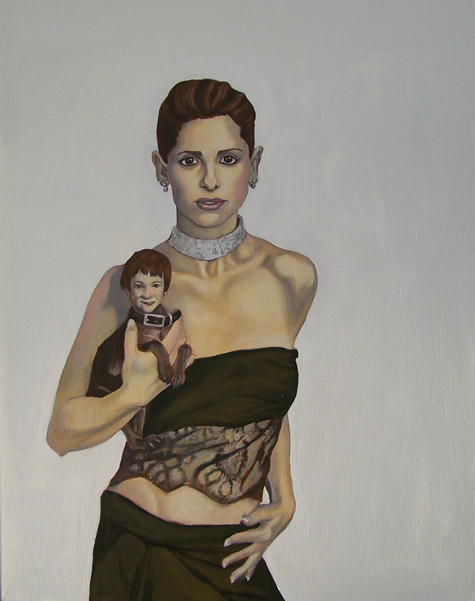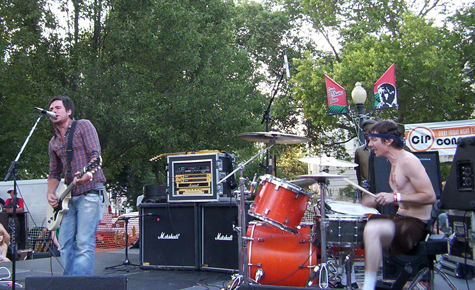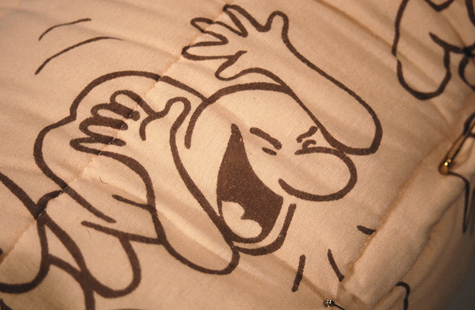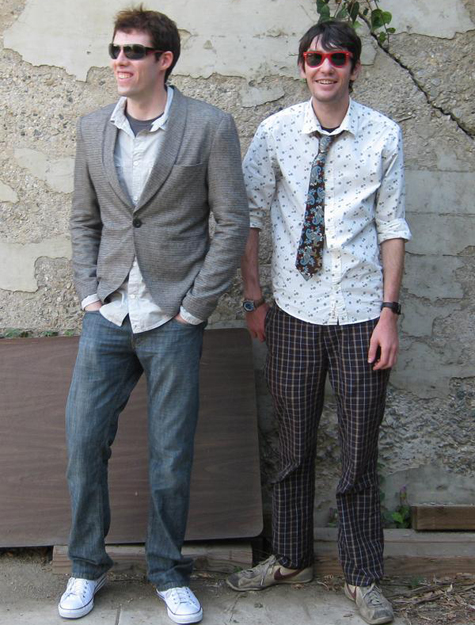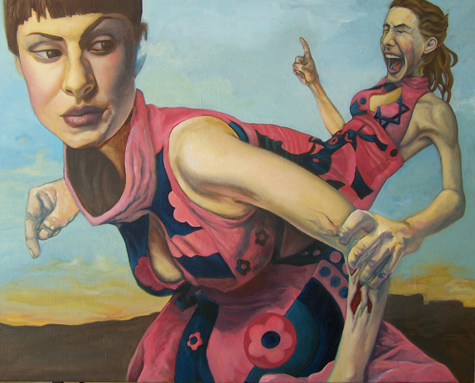20,000 Breaks into the Sacramento Music Scene
Comprised of locals David Mohr and girlfriend Meg Larkin, the band 20,000 is relatively new to the Sacramento music scene—but with their youthful energy and down to earth attitudes, it’s no wonder that fans are quickly tuning in. “By default, I usually just say it’s dance music with guy/girl vocals and synthesizers,” Larkin says about their style. Even if you’re not typically a fan of dance music, there is no doubt that the upbeat tempo and catchy lyrics of 20,000 will have you up and out of your seat in no time.
It started as a dream—literally. Mohr says, “I had a dream a while ago that we had a band and we named it 20,000.” Both Mohr and Larkin are adamant that if you dream it, you must do it, and thus 20,000 was born. “If you do what you do in your dreams in real life, then it’s almost like you’re predicting the future,” Mohr says.
“Yeah, it’s true,” Larkin adds. “If you dream that you’re wearing red socks, you have to buy a pair of red socks and wear them.”
About two years ago, sparks started flying, musically, that is. Mohr began writing music on his computer, and then he and Larkin started adding vocals. Mohr says, “When I was writing the songs for the album, I was listening to music that has a lot of synths in it, but not necessarily electronic music.” They cite musicians such as Prince, Talking Heads and Hot Chip as being very influential during that time period. Larkin says, “Up until a couple of years ago I never really listened to dance music, but it’s some of my favorite music now.”
The goal for their music is simple: create songs with a good beat that people will want to party and dance to. Mohr says, “While we were recording the album, I was thinking it would be cool to just have a good CD for people to listen to in their houses at parties.” He writes all of their songs, and is no stranger to the music world. He played with some of his high school buddies in a band called Didley Squat for about six years, and when that gig dissolved, he naturally transitioned into forming 20,000.
While they had been diligently practicing and recording songs at home for many months, their first live performance happened this past August, at Old Ironsides. “We were apparently really visibly nervous,” Larkin remembers. “I was wearing short shorts and this crop top, just trying to be funny, but it was the most intimidating outfit to wear in front of people as a joke.” While their first show was definitely nerve-wracking, a lot of their friends came out to show support and it was a fun experience that paved the way for future shows. Other than Old Ironsides, they’ve played at Javalounge, Luigi’s Fun Garden and Blue Lamp.
When transitioning to live performances, Mohr says that one of the biggest challenges is figuring out how to make everything sound right in such a drastically different environment. After spending two years perfecting their songs in their apartment with only a tiny set of computer speakers—and trying to keep the noise level down so as not to disturb the neighbors—they now had to create a seamless performance in a real venue.
For Larkin, there was the added challenge of being brand-new to the music scene. She had been involved with musicals during high school but had no prior experience with playing an instrument. “When we decided to start playing live shows, I learned how to play rudimentary keyboard,” she says. This was completely terrifying at first, and she remembers being nervous for six or seven hours before a show, to the point where she could barely eat or drink. But as time went on and performing became more commonplace, her nervous energy eventually went away, and now she loves the thrill of shows. “When we have a show and there’s people responding to it and everyone is nice it’s like, yes! We’re the best band ever! Let’s do this every night!”
Both members play keyboards and sing, and their drumbeats are on an iPod. This means that they can carry all of their instruments to a show and set everything up on their own—no roadies required. “It’s super easy for us to set up,” Larkin explains, adding that it literally takes about four minutes. “Just put the keyboards on the stand, plug it in, turn the iPod on and we’re set.”
Although perhaps they hadn’t planned to “make it big” in the music business, the Sacramento music scene has been good to 20,000. Larkin is surprised at how easy it has been to get shows that they really enjoy. Their friends have also been extremely encouraging in this new venture. Larkin says, “It’s definitely been cool to see how supportive our friends have been, getting them to come out and pay for shows over and over and over again.”
20,000 will likely become a common name in the Sacramento area as time progresses. The couple is ecstatic about their 2009 New Year’s Eve show at Blue Lamp, which has been the biggest show they’ve played so far.
You can check them out on Myspace: www.myspace.com/20000music.
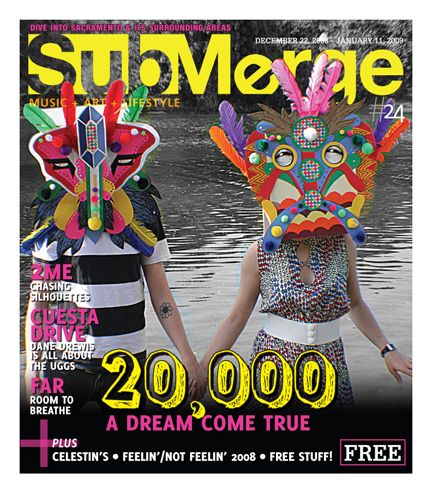
Great Expectations
Crank up the volume and feast your ears on a musical smorgasbord that definitely requires a full concert hall. The native Sacramento band MC Rut combines the talents of singer and guitarist Zack Lopez with drummer and backup vocalist Sean Stockham. Lopez’s angsty lyrics explode on a canvas of poignant guitar riffs, for a full sound that is raw and edgy. MC Rut doesn’t tiptoe into their songs—they give it all they’ve got, musically and lyrically.
Who would have known a two-man band could rock this hard? This dynamic duo has been playing together since they were only 12 or 13, too young to even understand that music could be a business. “It was great,” says Stockham. “You played music because it was fun. Some kids were skateboarding. We were playing music.”
In 2000, when they were still in their teens, the guys were involved with a band called Leisure, which was appropriately named considering that neither Lopez or Stockham identifies very strongly with the band. “It was just an outlet to play shows with and be part of the scene,” Lopez remembers. It also allowed them that first taste of life as musicians. Living in Los Angeles and having a record deal straight out of high school. Lopez recalls, “We felt like we beat the system or something—but we definitely didn’t.” When the band dissolved in ’03 and it was time to join the real world once more, it was a disheartening experience. “It all fell apart and it forced us to join the club, so to speak, of what everyone else was doing,” Stockham says. “We came back tails between the legs and everything.”
In a sense, forming MC Rut was an organic decision to go back to their roots, to what music started out as for them. “That’s what we knew music as,” Lopez explains. Stockham adds, “We got sidetracked for seven or eight years. That’s what we consider that period of time in between the beginning and now.”
These boys are now so close that they virtually finish each other’s sentences. Although there are only two of them, the talent of the band is in no way compromised, and each member has settled into his niche. They relay that Lopez’s specialty is “playing loud guitar and singing” while Stockham’s specialty is “playing loud drums and singing.” Oh, and did they mention playing loud?
The pair played as an official band for the first time at the Capitol Garage in December ’06, and have made quite a stir since their debut. So far, they’ve released two EPs, which they simply refer to as “The Blue One” and “The Red One.” “These are our mix tapes,” Zack laughs. Although their second EP was just released in May, it was met with applause and a cry for an encore throughout Sacramento and beyond. The song “Busy Bein’ Born” is a hit in the UK, and the guys feel that it’s a much better representation of their style and musical capabilities than “New Low,” the catchy and more straightforward US single. Lopez explains, “We’re a lot heavier and a lot rawer and a lot more aggressive. [New Low] just kind of came out the way it did, but “Busy Bein’ Born” encompasses everything we do—it’s heavy, it’s soft, it’s melodic, it’s got lyrics, it’s got melody.”
Yep, it’s got melody, but don’t think that MC Rut is just screaming for no reason. Woven in with the powerful vocals and bad ass guitar riffs is a very honest fear of the ordinary, of struggling to make it in a life you don’t even want—as the name Middle Class Rut implies. “We’re goal oriented people, and the thing about the 9-to-5 American dream middle class is there’s really no goal—there’s just an end,” Stockham says.
They’re riding the coattails of fame now, but understand the fickle nature of the industry and that a 9-to-5 job could be just around the corner—although they continue to evade that world like the plague.
Amazingly, the fame doesn’t seem to have gone to their heads. But, they do admit that it’s a much more friendly world when you get to be the headliner rather than the opening act. Stockham recalls playing at the Boardwalk multiple times as an opening band, and generally being treated pretty badly. “Now when we roll in there and throw a show and it’s our show, we’re kings for a night,” he says proudly. With the reception they’ve been getting recently, it looks like they’ll get to be kings for more than just a night.
When it comes down to it, though, MC Rut is just two guys doing what they love. Public attention comes secondary to the music. “It just so happens that people are starting to listen in and recognize what we’ve been doing,” Stockham says.
Submerge catches up with MC Rut in the interim before they hop a plane to London—an interview that appropriately takes place at the Streets of London bar.
Can you tell me a little about the projects you’re working on now—the new album and the upcoming tour?
Sean Stockham: We’re always playing and writing music whether it’s an album we’re writing for or not. We do what we do. We get together five or more days a week and play music for as many hours as we can. Right now we’re getting ready to go to London in November. Obviously we’re really excited about that
Have you guys ever been to London before?
SS: This is the first time. It’s definitely something we’ve dreamt about doing since we started playing music. At some point we had stopped dreaming about it, and it didn’t even seem realistic.
Zack Lopez: Now it’s reality.
When do you think the new album will be realized?
ZL: We don’t even know really what the new album is. We’ve never written a song for a specific project.
SS: Out of what we have now we could probably put together maybe four to seven projects.
Why did you make the decision to release EPs instead of a full album?
ZL: They are full albums essentially. We’re just scared of the word “album.” Once you commit to saying “album,” that’s your first album.
SS: It’s just like not committing to marriage”¦ There’s something very scary about marriage and there’s something very scary about a full-length record.
So people have described your lyrics as being kind of aggressive. Did you write these songs during a dark period, or are your lyrics pretty consistent?
ZL: It wasn’t a dark period; it was just a normal life period. You don’t necessarily have to be depressed, you know? Most people aren’t happy with their lives as it is and I think that’s a big part of this band.
Your songs express a general dissatisfaction about middle class life. Would you say you have a fear of the 9-to-5 lifestyle?
SS: It’s different than like the fear of death, because none of us have actually experienced death”¦ The 9-to-5 thing is something that’s always right there.
ZL: I feel like some people are down with what they do and that’s great. It’s all about being happy with where you’re at. When you come to the point where you’re struggling to be somewhere that you don’t even want to be in the first place, that’s when you’re bummed.
Do you think that’s an artist thing?
SS: I don’t want to say that. You can say that, but yeah, that’s probably exactly what it is.
ZL: We expect a lot from ourselves. And if we don’t get it, then we’re miserable, and we keep chasing it till we get it.
You guys have high expectations, then?
ZL: From the first time we played music, we expected everything”¦ But at least we’re on the road to hopefully getting there. We’d rather be trying to get somewhere than never try and never be anywhere.
How do you think living in Sacramento affected your lyrics, or did it?
ZL: It definitely didn’t. It was more living in L.A., living on a failed dream that affected our lyrics.
In one of your songs, the song “I Don’t Really Know,” you write, “We’re never going anywhere, just circling around.” Do you still feel that way at times even today, even though it seems like your band is really taking off now?
SS: I think everyone feels like that, generally stated. For us in the band, its such an exciting time right now it would be really hard to not feel like shit was improving at least.
ZL: You’ve got to understand, five minutes of your life where you could feel so strongly about something you could write 10 songs, and you have to express what you felt at that point. It doesn’t necessarily express how you feel all the time”¦it represents who you are at that point. And we’re really good at writing songs about moments.
So if you wrote a song about right now would it have a more positive spin on it?
ZL: It would sound like 311. And we’d be bummed on it.
How has your music evolved between the last songs you released and the new songs you’re working on now?
ZL: The vibe is the same, but we feel like we’re better songwriters. If we don’t consistently keep writing better songs, we feel like we’re not doing our job. Every time we’re writing something, the only reason we ever move on something is because it’s better than what we’ve already done. If its not, it gets left behind, and that’s where it deserves to be.
SS: At the same time, if what we’re doing now doesn’t at least have something in common with what we’ve done before, then it’s not even us.
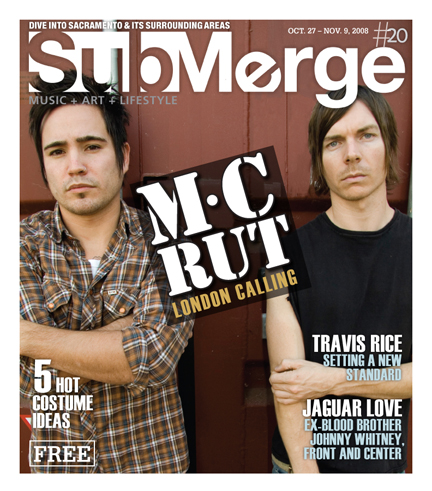
It’s OK to Smile
Go ahead and laugh. No, seriously—when it comes to her work, local artist Liv Moe intends to entertain. Drop all textbook philosophies and art-school vocabularies at the door, and prepare yourself to confront a hodge-podge of ordinary objects set against each other in such a way as to make you reconsider the objects we surround ourselves with on a daily basis. “My work really revolves around the environments that we construct for ourselves,” Moe explains. She says that although not all of her individual pieces have a specific meaning, there is a central theme that runs throughout her art, which is: “What American culture surrounds itself with. We’re a culture of stuff. We’re packrats; we have so much junk.”


Hair Chair
Her current show at The BrickHouse Gallery will run until Oct. 31, and is entitled Giggles. The show is titled after a particular piece bold and assertive enough to coax a nervous laugh from just about anyone: large male genitalia fashioned from a comic-print sleeping bag that Moe picked up at a thrift store. She was originally attracted by the cartoon pattern, but once she brought it home she noticed that this was no ordinary sleeping bag; it zipped up the center instead of the side, and the top was meant to be folded over on both corners so that someone could wear it “like a little cocoon,” she says. “When I put it together in my studio the way it was intended to be worn, I realized that it looked like a giant cock and balls,” she laughs. This phallic symbol created from such a light-hearted print makes for an interesting juxtaposition. “For me it references that nervousness that happens when kids are confronted with sexuality. It’s something bigger than they can understand, so the way that [they] address it is to giggle about it.”
Moe had been waiting for about a year for just the right opportunity to show this particular piece, and it all came together while planning her current show. Many of the pieces were previously shown during her thesis show at Sacramento State last April, and she remembered hearing a lot of laughter from people who viewed her work—and so, a theme was born.
“In some cases an uneasiness happens with some of the work. I think that’s why people nervously giggle when they see things that are odd or funny but they don’t totally understand them, so I thought it was appropriate to name the show Giggles,” Moe says.
In a conversation with this amazingly articulate artist, Moe shares the inner-workings of her artistic mind.
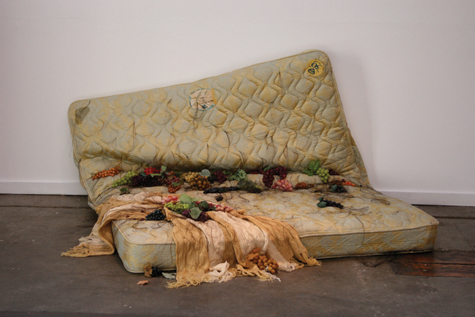

Spring Air
Tell me a little about your current art and how it came to be what it is. Did it start with an idea of something that you wanted to express, or did it just come to be on its own?
Once I started working with materials, I was so compelled to work with materials. It was all I wanted to do. Suddenly I was so excited about art and wanted to pursue a degree in it. It was like, this is what I want to do. I’m not totally sure how I’m going to do it or what my focus is or what I’m specifically interested in expressing through it, but this is what I want to do. I realized over time that I have a sensibility that when I approach objects, there are things that I just find humorous or culturally interesting.
Many of the items used in your art would be considered junk by most people; when did you begin to see these items as art?
It’s one of those things that you just 100 percent have to believe that what it is can be art, and push it as far as you’re comfortable pushing it”¦I’ve realized with my own art that once I start the questions, I’m over. I should just stop making the piece, [or] you start feeling that you’re just fooling yourself, and that what you’re doing is just silly or odd or dumb, and you can’t develop your idea any further than that.
Do you set time aside to collect the items used in your work, or do you just gather things as you come across them?
It just depends”¦. When I’m in my practice, I usually go looking for materials a couple times a week”¦ Sometimes something will start out really organically, like I’ll find one material, then I’ll find this object, then I’ll start putting them all together, and I’ll realize that in order to make this successful, I need a ton of grapes. So you mine the thrift stores as far as you can, and suddenly the piece becomes going to all the dollar stores you can find, and going on the Internet, researching how much rubber grapes cost”¦Once something comes together, you’re on this really funny journey.
You’re both a writer and an artist. Do your left-brain and your right brain always get along, or is it hard to find a balance between the two?
There is a part of me that is overly analytical and I ask too many questions and I think too much about why I’m doing something without just letting myself do it. So there’s really a balance for me between over-documenting what I’m doing or writing about what I’m doing or photographing what I’m doing and just letting it happen.
You use a lot of items from the domestic sphere; do you consider yourself a feminist artist?
I identify myself as a feminist very distinctly, but I don’t perceive what I make as feminist work”¦ The work is something that is accessible to everyone and it’s not about furthering a feminist philosophy.
If you could have viewers understand just one thing after going to one of your shows that they didn’t think of before, what would it be?
It really is simple. It’s about the components you’re looking at, and then suddenly all that work became more accessible to me and more interesting, and so I think that that’s really the thing that I hope people will take away when they look at it is that it’s OK, you can really just look at what’s actually there and make your decisions based on that.
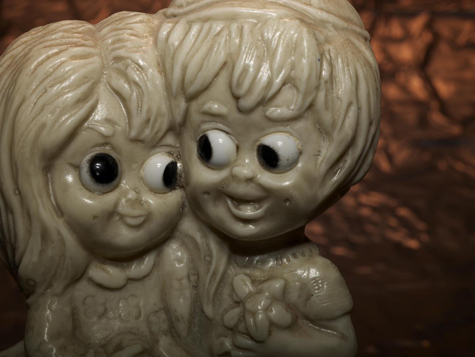
We Need Each Other
Singer Christopher Fairman Shows that Darkness Can Be Beautiful
Listen to local musician Christopher Fairman’s upcoming new release, 85, 87, and allow Fairman’s smooth, strong vocals to meld with guitarist Nick York’s haunting, melodic riffs. Fairman’s brooding voice is just slightly reminiscent of singers like Ryan Adams and Nick Drake, with a darkness that permeates throughout all seven tracks—powerful, lilting melodies with the occasional romantic ballad thrown in (hey, he is only 23).
Let’s not forget that the CD was recorded in just four hours, in a session that was equally surprising to Fairman, York and producer David Houston. Although Fairman had been mulling the tracks over in his mind for months, he had no idea when the day would come to record. But the muse is a fickle creature, and one day, it struck.
“I had a really bad day, and for some reason I just knew it was the day to record,” he says. There’s nothing like recording an entire album practically straight through to turn your day around. “It was a good day. But afterward, I was pretty mentally drained,” he remembers.
Songwriting seems to be Fairman’s forte. He says that although he’s dabbled in music since the age of 8—including piano, violin and saxophone—none of those instruments really spoke to him.
“I didn’t feel like I could express myself enough,” he explains. “I decided to play the bass, which just made me want to play the guitar, which is where I ended up. I really probably only played the guitar to write songs.”
The new album marks a personal triumph in regards to Fairman’s writing, as he explains, “I think it’s the first time that I feel really good about being a writer” I was able to really let go and I could write about things I would be afraid to write about before.” You’ll hear poetry in the music, with the melodies carrying you to a place where you forget you’re even listening to words. “I write every song differently. I’m a big fan of poetry, but I don’t consider myself a poet.”
The cover art on 85, 87 was painted by Michael Pitcher, one of Fairman’s best friends, and serves more than just decoration. Fairman points to the painting as being one of the main inspirations behind the entire album.
“The painting was a big part of a year of my life, because I was writing songs and he was painting his painting, and then he gave it to me for my birthday, Fairman says. “It really feels like a year of my life all really came together.”
Song choices on the album were largely a result of that connection to Pitcher’s painting. Fairman relates that he had 18 songs to choose from, but made the decision to whittle them down to the seven songs that were the darkest. “I kind of purposely wanted to go darker because the painting is pretty dark,” he says.
Although Fairman is still young, he seems keenly aware of both his own emotions and the emotions of others. And although his music may be dark, it isn’t entirely autobiographical. “I feel like I took a year of my life and condensed it, like someone writing a novel might do. Not every character is about them,” he explains.
Fairman has also built a lengthy resume in a relatively short time. His first taste of music production happened with the band he formed while in high school, Fairman and Friends, which included pianist David DeMuri and drummer Jon McHenry. They released their CD, Patiently Waiting, in 2004. In 2006, Fairman put out a solo EP. Then, later that year, he released his full-length album Born Broken, a slightly jazzier and more pop-like album than his newest release, and including a variety of different musicians and instruments—listen for cello and violin in the background of certain tracks.
Beyond simple evolution, Fairman’s musical abilities have matured while working with so many different musicians, allowing him to embrace his many sides. “I think that back in my first band I wanted to do this jazzy rock kind of thing, and now I have separate things. I have this solo thing that is kind of dark, really moody, airy stuff. I also have a band called The Stilts and that is a mix of a pop, rock and psychedelic band.”
He calls The Stilts his “rock band”; when Fairman’s going to play at Old Ironsides, he is accompanied by Nick York and Mike Farrell on guitar, Matt McCord on drums and Chris Vogel on bass. If he’s going to Luna’s Café, that’s when he goes solo, with Nick York’s guitar riffs to carry him through.
Although Fairman still waits tables now, it’s safe to guess that he won’t need a day job for much longer. “I see music as a business,” he says, explaining all the work he’s put into his musical career thus far. “There’s just so many things you have to do to actually put on the show, especially because I like things to be good.” In the meantime, we should definitely plan on hearing the name Christopher Fairman in the Sacramento area for quite a while. “John McRea, the guy in Cake, told me that the way to make it is to keep going until you can’t do it anymore,” Fairman says.
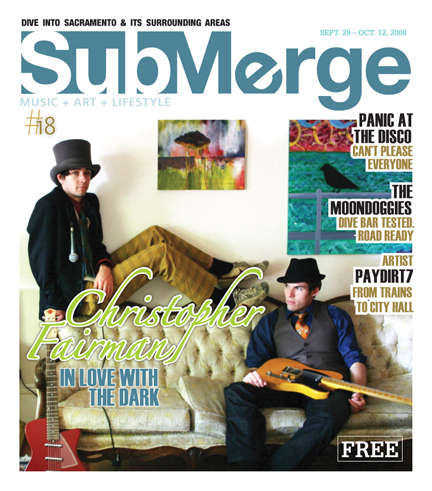
Local Artist Eli Trujillo Mixes it Up on the Palette
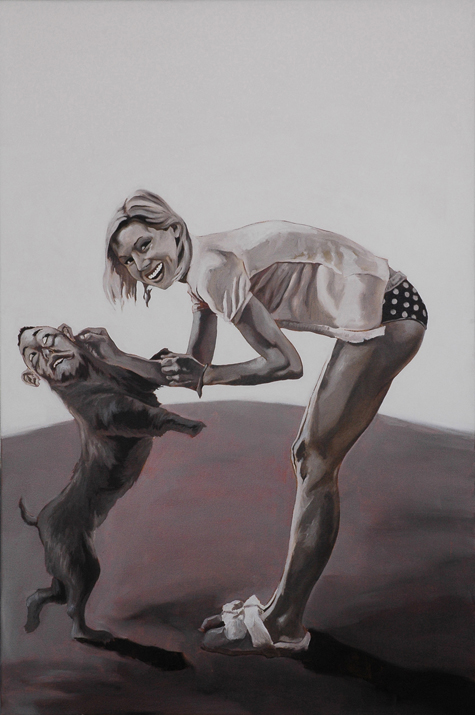
A beautiful blonde plays with her dog in the park—wait, does that dog have a human face? A young couple takes in an art gallery pose for the camera—hold on, looks like the boyfriend has morphed into a gargoyle! Enter the colorful and sometimes bizarre world of local artist Eli Trujillo. Most of his paintings begin with a real person in mind, either a friend or family member, or perhaps a recent celebrity infatuation; but when the genius begins, Trujillo starts making changes.
He describes his sometimes funny, sometimes serious twists on real people as “not exactly a remix; more like a cover toon.” Growing up on a diet of comic books, Trujillo cites comic book painter Simon Bisley as the artist who sparked his interest in painting. Add the influence of Norwegian figurative painter Odd Nerdrum, and what emerges are unlikely portraits that morph ordinary humans into two-headed women, dogs with human heads and bug-eyed cartoon beauties.
“One of the major things that comic books did was give me a strange idea of what humans should look like, as far as guys being super buff, having six packs and being able to punch through walls,” Trujillo said.
Unfortunately, the real-life Trujillo does not possess superhuman strength, and spent many years working regular jobs, including a brief stint blending Caramel Machiattos at Starbucks, which he quit after watching Fight Club too many times.
“I just started hearing about consumerism and the corporate world. I was going to try and do with less and see if I could make it not working,” Trujillo explains.
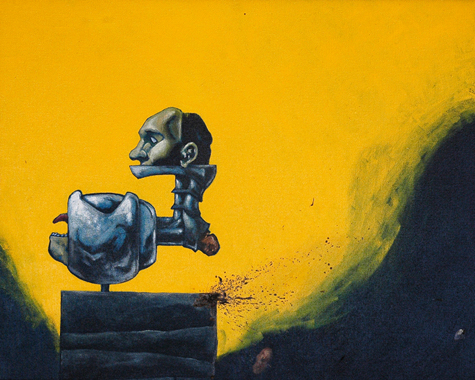
His days of corporate freedom lasted two glorious weeks; then, it was back to the daily grind and another mindless job. Eventually, though, the small boy that used to draw cartoons spoke up, and he began to take his art more seriously. In 2007, Trujillo quit another job to pursue a degree in Art Studio at California State University, Sacramento.
Since moving to Sacramento in 2004, Trujillo’s work has been shown mostly in smaller, more alternative art spaces like Greg Pond Photography in 2006 and Studio Yes in 2007, as well as A Bitchin’ Space in 2007 and the Brick House Gallery in 2008.
Beginning Sept. 13, Trujillo’s paintings will be part of a circus-themed group show at A Bitchin’ Space. The various paintings will make up a circus train, but it’s doubtful that Barnum & Bailey would approve. This show is “a protest for animal cruelty,” Trujillo says. And don’t expect participating artists to spoon-feed their message to the public. Trujillo explains that it’s up to local Sacramentans to decipher their protest message: “We tell people it’s just a circus show,” he said.
Although Trujillo’s paintings pack a powerful (and colorful) punch, most aren’t intended to make a statement.
“I’m just letting people know what’s going on in my head,” he said. Movie buff and self-proclaimed junk—TV watcher, many of his paintings highlight celebrities.
“It’s interesting that you can get infatuated with people that you don’t know,” he said. “Most recently, I have been working with the ideas of celebrity worship, idealism and the unreasonable expectations they create. In conjunction with these works, I am beginning to use photos from my family archive in the same manner, creating an interesting juxtaposition when shown together.”
Trujillo also creates what he calls “personal propaganda” pieces, which serve as good advice—directed toward himself. For example, he’ll paint a picture of himself with no shirt on.
“I’ve got a nice gut going on. [The pictures] make me not want to eat ice cream so much,” he laughed.
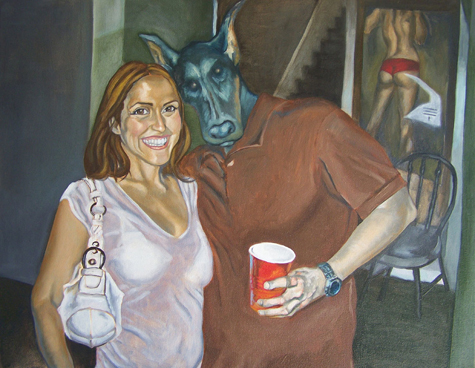
Trujillo says that these paintings are meant mostly for himself, but it’s quite possible that others could learn from them as well.
“Almost all my paintings are personal and autobiographical, so I think it’s hard for people to really get a hold of them,” he said.
Formal instruction in art has greatly improved his ability with techniques like space and volume, and he’s noticed that his paintings have become increasingly more realistic as his skills improve.
“I’ve recently been making a conscious effort to place the figures in an environment rather than, say, a red or gray background, to create a more believable space,” he explained. Looking back on work that was completed in the past, he notes that some paintings are much more juvenile than others, and oftentimes he’ll change or alter these paintings. “Something I’ve just started doing is not being afraid to change things”¦even two years after its finished,” he says.
On the other hand, though, he hasn’t lost his love for goofy-looking superheroes. “Although I take my paintings seriously, I also try and inject a bit of humor into them. I would love to see someone fall over laughing at one of my works, but this has yet to happen.”
